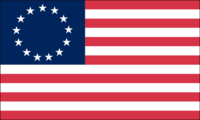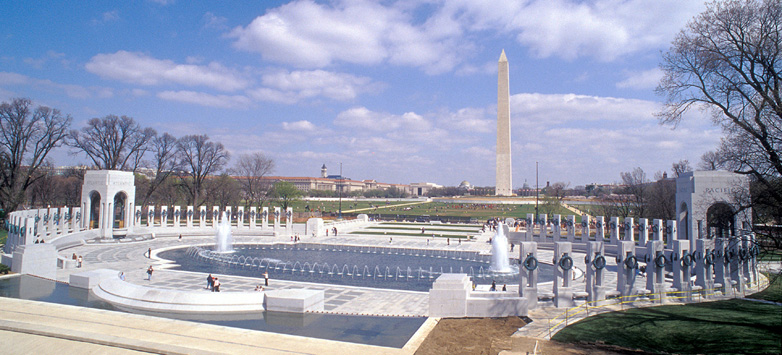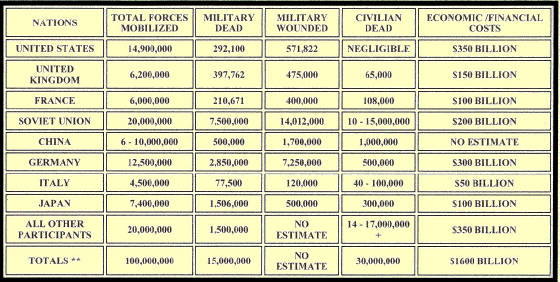Essay outlines the fates of the signers of the Declaration of Independnce.
Have you ever wondered what happened to the 56 men who signed the Declaration of Independence?
Five signers were captured by the British as traitors, and tortured before they died.
Twelve had their homes ransacked and burned.
Two lost their sons serving in the Revolutionary Army; another
had two sons captured.
Nine of the 56 fought and died from wounds or hardships of the Revolutionary War.
They signed
and they pledged their lives, their fortunes, and their sacred honor. What kind of men were they?
Twenty-four were lawyers
and jurists.
Eleven were merchants.
Nine were farmers and large plantation owners;
All were men of means, and well educated. But they signed the Declaration of Independence knowing full well that the penalty would be death if they were captured.
Carter Braxton of Virginia, a wealthy trader, saw his ships swept from the seas by the British Navy. He sold his home and
properties to pay his debts, and died in rags.
Thomas McKeam was so hounded by the British that he was forced to move his
family almost constantly. He served in the Congress without pay, and his family was kept in hiding. His possessions were taken
from him, and poverty was his reward.
Vandals or soldiers looted the properties of Dillery, Hall, Clymer, Walton, Gwinnett,
Heyward, Ruttledge, and Middleton.
At the battle of Yorktown, Thomas Nelson Jr, noted
that the British General Cornwallis had taken over the Nelson home for his headquarters. He quietly urged General George Washington
to open fire. The home was destroyed, and Nelson died bankrupt.
Francis Lewis had his home and properties destroyed. The enemy jailed
his wife, and she died within a few months.
John Hart was driven from his wife's bedside as she was dying. Their 13 children
fled for their lives. His fields and his business were laid to waste. For more than a year he lived in forests and caves,
returning home to find his wife dead and his children vanished. A few weeks later he died from exhaustion and a broken heart.
Norris and Livingston suffered similar fates. Such were the stories and sacrifices of the American Revolution. These were
not wild-eyed, rabble-rousing ruffians. They were soft-spoken men of means and education. They had security, but they valued
liberty more. Standing tall, straight, and unwavering, they pledged: "For the support
of this declaration, with firm reliance on the protection of the divine providence, we mutually pledge to each other, our
lives, our fortunes, and our sacred honor." They gave you and me a free and independent
America. The history books never told us a lot about what happened in the Revolutionary War. We didn't fight just The British.
We were British subjects at that time and we fought our own government! Some of us take these liberties for granted but we
shouldn't. Remember; Freedom is never Free.
Snopes.com says of the above essay, Status: some true; some false. Snopes does
not change the essay it just tries to give plausable information of the parts that it considers untrue. None the less; They
Paid a Price. F. D.
2001, Ann Landers reported in her column that a history
buff from Dallas had shared with her information concerning this story. He stated that most of the above was true,
but unfortunately, a lot of the information was incorrect or misleading. He shared the following:
No signer was killed
outright by the British, and only one, Richard Stockton, is said to have been imprisoned solely for having signed the Declaration
of Independence. The others were captured while fighting in the army and were treated just like any other prisoner of war
(which was fairly harshly), but they were not tortured. Of the 56 signers, 17 (not nine) held commissions in the army or did
medical duty during the war. Many of those whose property was looted or destroyed managed to re-establish themselves financially
after the war.
Carter Braxton did suffer financial hardship because of the British, but he
retained other holdings. What ruined him were commercial setbacks after the war. Thomas McKean did not die in poverty. In
fact, he was quite wealthy when he died at the age of 83 in 1817. No one knows for sure if Thomas Nelson's home was fired
upon (the source of this story is family legend), but he heard the home was turned into a tourist attraction after the war,
and additional cannonball holes were added for "authenticity."
The other facts are essentially correct, but they give the
impression that these men died as a result of wounds suffered in the war, or they died in poverty. In reality, the majority
survived the war and rebuilt their fortunes.
The signers of the Declaration of Independence knew they could have been targeted
by the British as traitors. They showed tremendous courage and bravery by willingly putting their names on a document that
could bring about their deaths. They were remarkable men. We do not need to embellish the truth.
GEORGIA, Button Gwinnett, Lyman Hall, and Geo. Walton.
NORTH-CAROLINA, Wm. Hooper, Joseph Hewes, and John Penn.
SOUTH-CAROLINA, Edward Rutledge, Thos Heyward, junr., Thomas Lynch, junr. and Arthur Middleton.
MARYLAND, Samuel Chase, Wm. Paca, Thos. Stone, Charles Carroll, or Carrollton.
VIRGINIA, George Wythe, Richard Henry Lee, Ths. Jefferson, Benja. Harrison, Thos. Nelson, jr., Francis Lightfoot
Lee and Carter Braxton.
PENNSYLVANIA, Robt. Morris, Benjamin Rush, Benja. Franklin, John Morton, Geo. Clymer, Jas. Smith, Geo. Taylor,
James Wilson and Geo. Ross.
DELAWARE, Thomas McKean Caesar Rodney and Geo. Read.
NEW-YORK, Wm. Floyd, Phil. Livingston, Frank Lewis, and Lewis Morris.
NEW-JERSEY, Richd. Stockton, Jno. Witherspoon, Fras. Hopkinson, John Hart, and Abra. Clark.
NEW-HAMPSHIRE, Josiah Bartlett, Wm. Whipple, and Matthew Thornton.
MASSACHUSETTS-BAY, Saml. Adams, John Adams, Robt. Treat Paine, Elbridge Gerry and John
Hancock.
RHODE-ISLAND AND PROVIDENCE, C. Step. Hopkins, and William Ellery.
CONNECTICUT, Roger Sherman, Saml. Huntington, Wm. Williams and Oliver Wolcott.
Some of us take these liberties for granted, but we should know more about the
"High Cost of Freedom" The price that was paid for our Freedom was great, indeed. How easily we forget.
F.D.

No one knows with absolute certainty who designed the first stars and stripes or who made it. Congressman Francis Hopkinson seems most likely to have designed it, and few historians believe that Betsy Ross, a Philadelphia seamstress, made the first one.
It is however called The Betsy Ross flag approved as the first official U.S. flag by the Continental Congress on
June 14, 1777.
The High Cost of Freedom

|
| World War II Memorial Washington DC |

|
| "HERE WE MARK THE PRICE OF FREEDOM" WWII MEMORIAL |
| Cost of WWII by Nation in Lives and Money |

|
| There Is No Way to Know The Exact Figures |
|
 |
|
|
 |
|
|
 |
|
|
|

